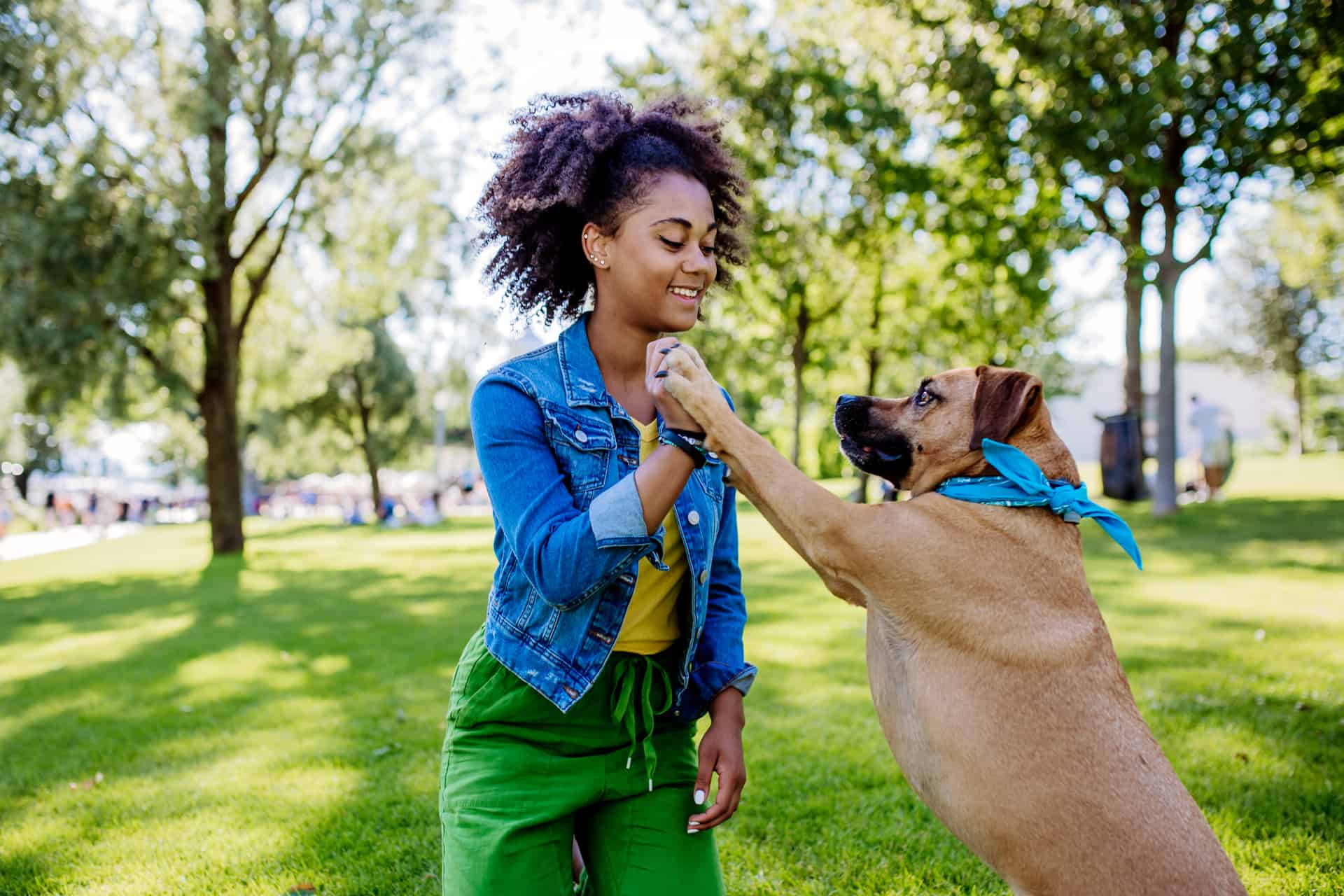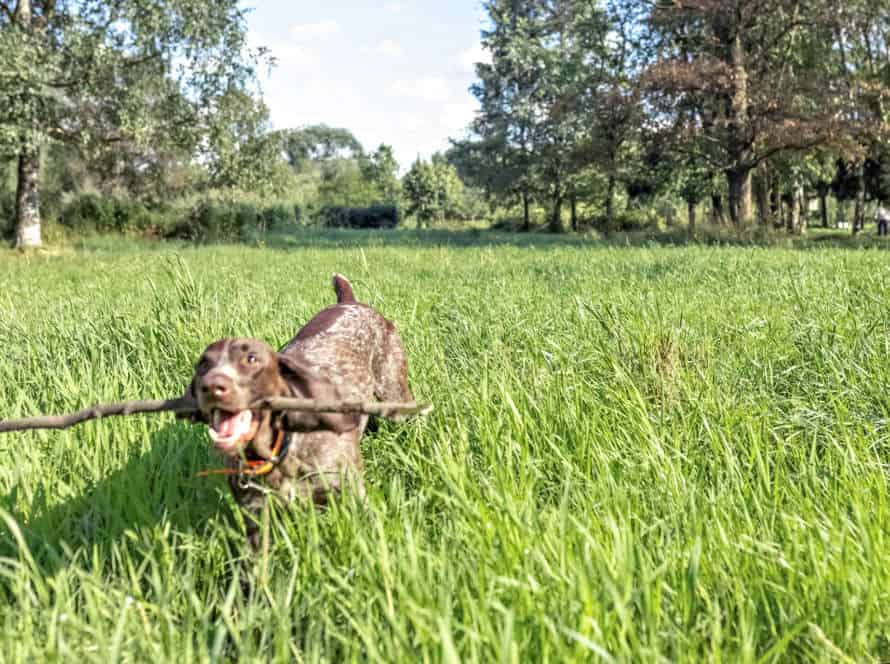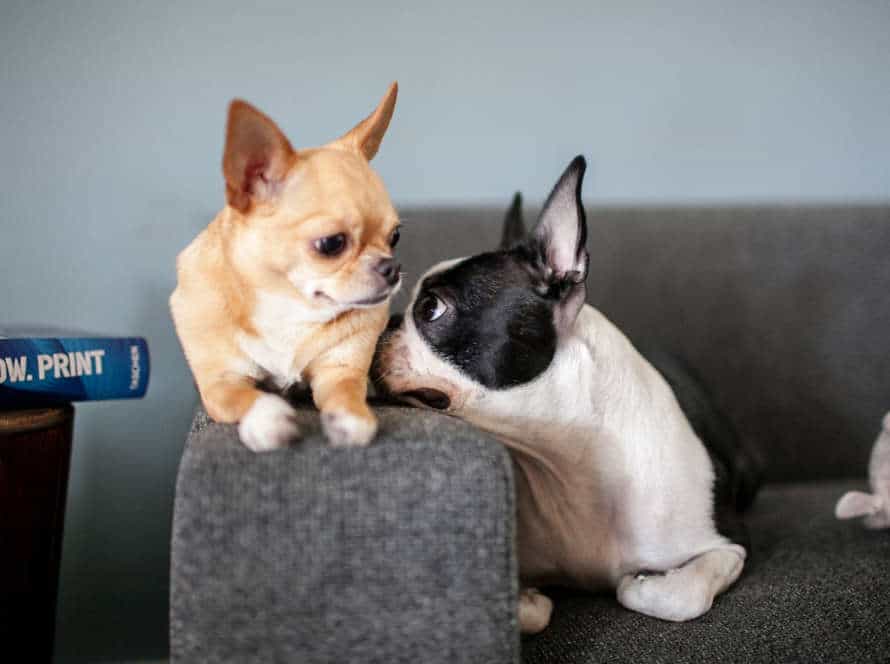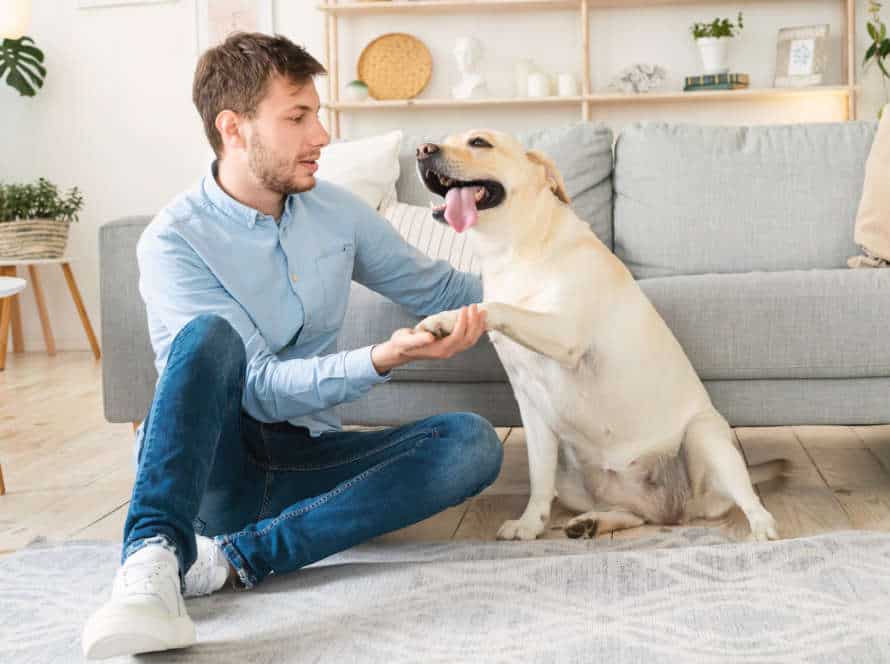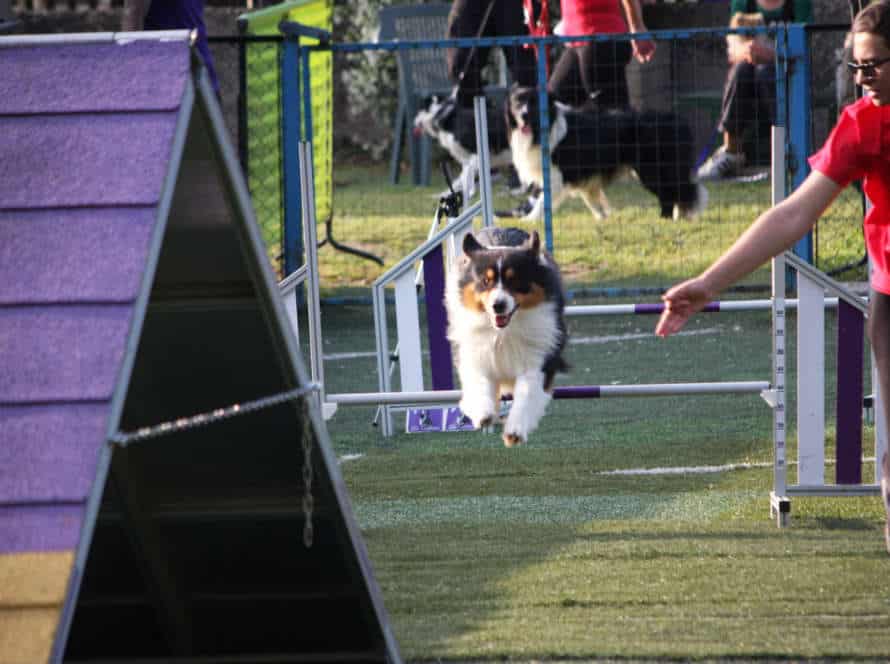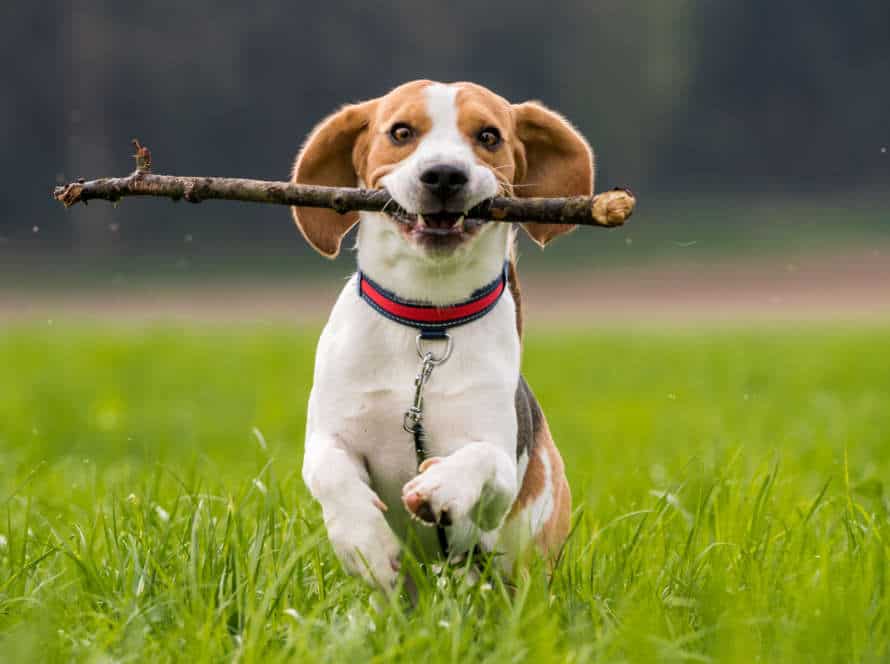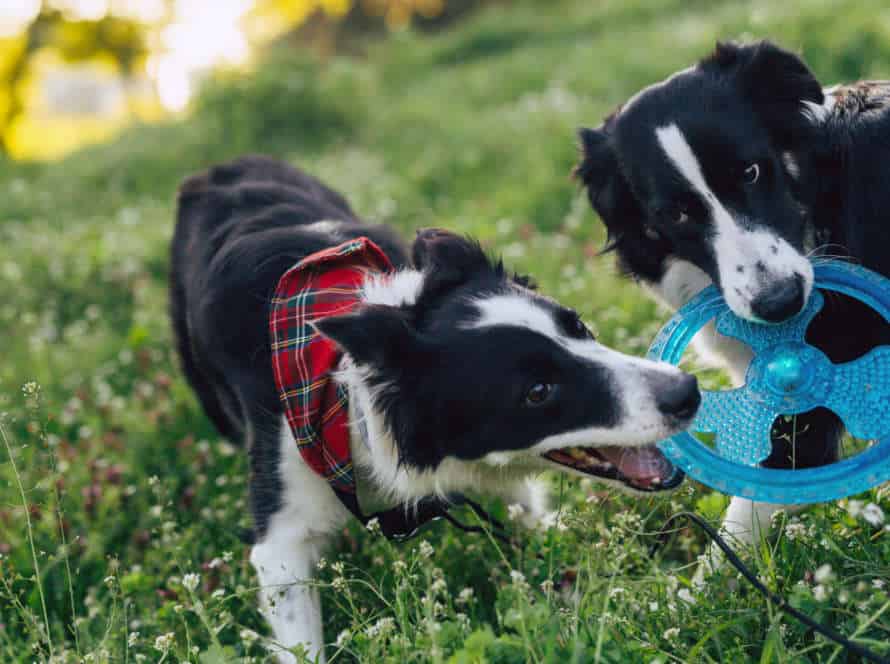Building Confidence: How Trick Training Empowers Your Dog
Tricks training is a great way to make your pup feel more secure and strong in a variety of scenarios. Here’s what it can do for your furry pal:
- Positive Rewarding: Trick training makes use of positive rewards to reinforce the loving relationship between you and your pup. This type of training also sets up a pleasant and rewarding atmosphere for your pup to learn in.
- Mental Stimulus: Trick training is a fun and stimulating mental exercise for your pup. As they take on new tricks, they are taught how to face challenges and attain goals, which improves their self-confidence and esteem.
- Problem-solving: Trick training encourages your pup to think for themselves and find solutions. This helps them to be more proactive and make better decisions in places like dog parks, social settings and beyond.
- Exercise: Many tricks involve physical tasks, which give further exercise and burn off energy. This can help to release pent-up energy and lessen anxiety in dogs.
Trick training is an entertaining way to give your pup the exercise, stimulation and mental challenges they need to stay healthy and happy.
The Importance of Confidence Building in Dogs
Achieving a confident pup is vital for a prosperous and sound bond between dog and owner. Trick training is a brilliant way to construct self-assurance in dogs. This lets them gain new abilities and boosts constructive behaviour. We’ll discuss here how trick training can help to strengthen your pup, plus give advice on how to kick off.
Understanding why Confidence is Crucial to a Dog’s Well-being
Confidence is super important for a pooch’s well-being. It gives them a sense of security and helps them face new situations. Building confidence must be part of their training. Here’s why:
- Stress and anxiety will be lessened with loud noises, new people or dogs, and changes in environment.
- Their performance in sports and physical activities will be improved.
- Aggression or fearful behavior towards others can be prevented.
Trick training is a great way to build their confidence. Break down complex behaviors into simple steps and reward the successes. With the right techniques and dedication, any pup can become more confident and joyous.
Signs of Low Confidence in Dogs
Low confidence in dogs can cause behavioral issues. It affects their wellbeing. As an accountable pet owner, know the signs of low confidence. Act to give your dog confidence. Common signs: barking too much, destroying things, hiding from people or other dogs, trembling, and peeing when scared. Low confidence can make a dog aggressive or scared. Trick training is a great way to build confidence. Teach your dog new things and reward them. Consistent training and socializing can help your dog feel secure. Pro tip: Spot signs of low confidence? Talk to a professional dog trainer or behaviorist. They can make a plan just for your pup.
Benefits of Building Confidence in a Dog
Building confidence in dogs is essential for their emotional health and behavior. Without confidence, dogs can be fearful, anxious, and even aggressive. Here are the advantages of building your pooch’s confidence:
- Improved socialization. When they’re more confident, dogs are prone to react positively to other dogs and people.
- Better behavior. Trust-filled dogs are less likely to chew, dig, or display other destructive behaviors.
- Less stress. Doing confidence-building activities can help dogs feel calmer and healthier.
- More trust. A self-assured pup is more likely to trust their owner and follow their instructions.
Trick training is one of the best methods for boosting a dog’s confidence. It includes teaching them new tricks or having them tackle obstacles, so they can be sure of their capabilities.
A confident dog is a contented pup and a pleasure to have around.
How Trick Training Builds Confidence in Dogs
You can boost your pup’s confidence by teaching them new tricks and commands. This is called Trick Training. Done right, it can build a strong bond between you and your pet. This article examines how Trick Training builds confidence in dogs and how it can benefit your relationship.
Trick Training vs Regular Training
Regular training teaches dogs commands and behavior. But, trick training is fun and strengthens the connection between you and your pup. It’s an awesome way for them to show off their skills and get physical and mental stimulation. It can help shy or anxious dogs gain confidence and overcome fears. Plus, learning new tricks gives them a sense of accomplishment and boosts their self-esteem.
In contrast, regular training focuses on obedience and correcting bad behaviors. This can be repetitive and even stressful for dogs. Trick training is a great way to break the monotony and create a positive relationship with training.
Adding trick training to your dog’s routine is a great way to improve behavior and deepen your bond.
The Importance of Positive Reinforcement in Trick Training
Positive reinforcement is a training method which rewards desired behavior, instead of punishing undesirable behavior. Trick training helps dogs gain confidence and positive reinforcement is an essential part of this.
It works because dogs will repeat actions that win rewards. This technique encourages independent thinking and problem-solving in dogs, building their trust in their own abilities.
Trick training is a great way to utilize this method and help timid or fearful dogs. Rewarding them with treats and compliments when they do tricks links training with something positive, helping them to overcome any worries they have.
In the end, positive reinforcement training helps a pooch develop a confident, balanced character, which in turn makes them happier and healthier.
Types of Tricks That Build Confidence
Trick training is a cool and useful way to make your pup trust themselves. It can help build confidence and better behavior. Try these tricks for a start:
- Obedience – like sit, stay and come, builds trust and communication.
- Balance – like standing or walking on a beam, builds coordination and balance.
- Retrieval – like fetching a ball or toy, makes pup feel useful and accomplished.
- Agility – like jumping hoops or weaving poles, helps with physical and mental agility.
It’s a great way to get closer, have fun and help pup grow! Try it and you’ll see the amazing changes it brings!
Steps to Train Your Dog Tricks that Build Confidence
Training your pup tricks is ideal to build their trust and a link with you. It’s fun and satisfying when done with patience, dedication and the right methods. Let’s look at the steps of teaching tricks and how they can help your dog’s self-esteem.
Choosing Tricks That Suit Your Dog’s Strengths and Weaknesses
To train your pup tricks that boost their confidence, first recognize their strengths and weaknesses. If they love jumping to catch a ball, work on a trick that involves that. If they’re nervous around strangers, pick tricks that require them to stay still and focused. Here’s the steps to make it happen:
- Begin with simple tricks your pup can easily pick up.
- Utilize positive reinforcement, like treats or compliments, to recognize excellent behavior.
- Do the trick in a peaceful, undisturbed space.
- Gradually ramp up the difficulty of the trick.
- Regularly repeat the trick to reinforce it and boost their self-assurance.
Remember: Patience and regularity are secrets to successful dog trick training. Always use positive reinforcement and never punish your pet for not getting it right.
Basic Techniques for Teaching Tricks
Teaching tricks to your pup is a great way to give them confidence and create a strong connection! Here are some tips:
- Start with the basics. Try ‘shake,’ ‘roll-over,’ or ‘spin.’ This gives them success and makes them want to learn more.
- Use positive reinforcement. Give treats, nice words, and playtime when they do something right. Avoid punishing them for mistakes. This makes learning enjoyable.
- Make complex tricks simple. Break them down into smaller, easier steps. For instance, teaching them to get a toy may include sitting, staying, and fetching.
- Be patient. Training your dog takes time. It might take weeks or months to master a trick. Be patient and appreciate small successes to keep your pup motivated.
By using these techniques, you can have lots of fun and give your pup amazing new skills!
How to Progress with Trick Training
Treat your pup to trick training! It’s a great way to strengthen your bond, keep them mentally stimulated, and build their confidence.
Here’s how:
- Start with simple tricks. Begin with something your pup loves doing like “shake” or “roll over”. Once they’ve learned the basics, try more complex tricks.
- Use positive reinforcement. Reward them with treats, praise, and playtime every time they do something correctly. No punishment or negative reinforcement!
- Be patient. Some dogs take longer than others to learn a trick. Repeat the training in short sessions and break it down into smaller steps.
- Practice regularly. Consistent training will help your dog master the trick and make them more obedient.
- Have fun! Trick training should be an enjoyable experience for both of you. Embrace the process of learning together and enjoy the progress!
Pro Tip: Trick training is not only good for your pup but it’s also good for you! It can boost your mental health and physical activity. Try it out and see the amazing changes in both of you!
Incorporating Trick Training into Your Dog’s Regular Routine
Incorporating trick training into your pup’s regular routine has many benefits! It can keep them mentally stimulated and happy. It also builds their confidence and obedience skills. Teaching tricks allows your dog to learn new behaviors, plus reinforce existing commands. Let’s explore the key benefits of trick training as part of your pup’s regular routine.
The Best Time to Teach Tricks
Train your pup when they’re most alert and focused, which is during their regular routine. It’s important to build confidence and connection between pet and owner. Here are some tips for incorporating trick training into your dog’s routine:
- Identify the best time for you and your pooch. After meals or exercise is great.
- Start with easy tricks and work up to more difficult ones as your pup gets better.
- Use treats and praise to motivate and reward them.
- Keep the lessons short and fun to keep them interested.
Tricks not only help build confidence, but give them mental and physical exercise. An important part of their routine!
Setting Realistic Goals for Trick Training
When it comes to teaching tricks to your pup, setting realistic goals is key. Here’s how:
- Start with simple tricks – like ‘sit‘ or ‘stay‘.
- Take into account breed, age, and previous training.
- Break complex tricks into smaller steps.
- Be consistent and patient – all dogs learn at different speeds.
- Incorporate trick training into your routine. This can build confidence, reduce anxiety, and boost obedience.
How Trick Training Enhances Your Dog’s Life
Trick training is a fab way to make your pup’s life more interesting and help their self-esteem. Incorporating it in a routine gives lots of advantages. Here are some:
- Physical exercise: Trick training is a pleasant and enjoyable way to help dogs use up energy and stay fit.
- Mental stimulation: Teaching new tricks gets dogs using their brains to stay sharp.
- Boosting Confidence: Trick training gives dogs the chance to learn and win rewards, helping them to feel more secure and less anxious.
- Fun bonding: Trick training is an excellent way to have fun and bond with your pet.
Pro tip: Change up the tricks regularly to keep them engaged.
Conclusion
Hence, trick training is an amazing way to boost your dog’s self-esteem, strengthen the connection between you and your furry friend, and provide them with a means to use their smarts. Trick training won’t take too long to learn and will be advantageous for both you and your pup for years to come. When done right, it can be a fun and satisfying experience for the two of you.
The Lasting Benefits of Trick Training for Building Confidence in Your Dog.
Trick training isn’t just fun for dogs. It can give lasting benefits. It builds confidence and helps dogs understand what they can do. It also strengthens the bond between you and your canine.
Moreover, some tricks may have useful applications. For instance, your pup can learn agility, obedience, and balance. Plus, practicing tricks regularly can keep them mentally active and prevent boredom.
All in all, trick training can help your dog trust themselves and stay entertained. So why not give it a try? You’ll see the advantages for yourself!
Frequently Asked Questions
Q: How does trick training build confidence in dogs?
A: Trick training provides a safe and engaging environment for dogs to explore and learn new skills. As dogs successfully master new tricks, they gain a sense of accomplishment and self-confidence that translates into other areas of their lives.
Q: Can any dog learn trick training?
A: Yes, any dog can learn trick training. It is important to start with basic commands and gradually work towards more complex tricks that challenge the dog’s abilities.
Q: What are some examples of trick training exercises?
A: Examples of trick training exercises include teaching your dog to shake hands, roll over, jump through hoops, and spin in a circle. These exercises can be adapted to suit your dog’s size and skill level.
Q: How often should I practice trick training with my dog?
A: It is recommended to practice trick training with your dog for short periods of time, several times a day. Consistent practice will help your dog master new tricks and build confidence.
Q: Can trick training help with problem behaviors in dogs?
A: Yes, trick training can help with problem behaviors in dogs. By providing a positive outlet for their energy and teaching them new skills, dogs are less likely to engage in destructive behaviors such as chewing or excessive barking.

